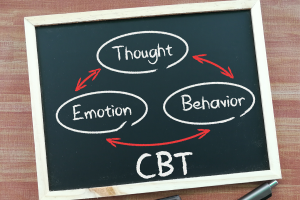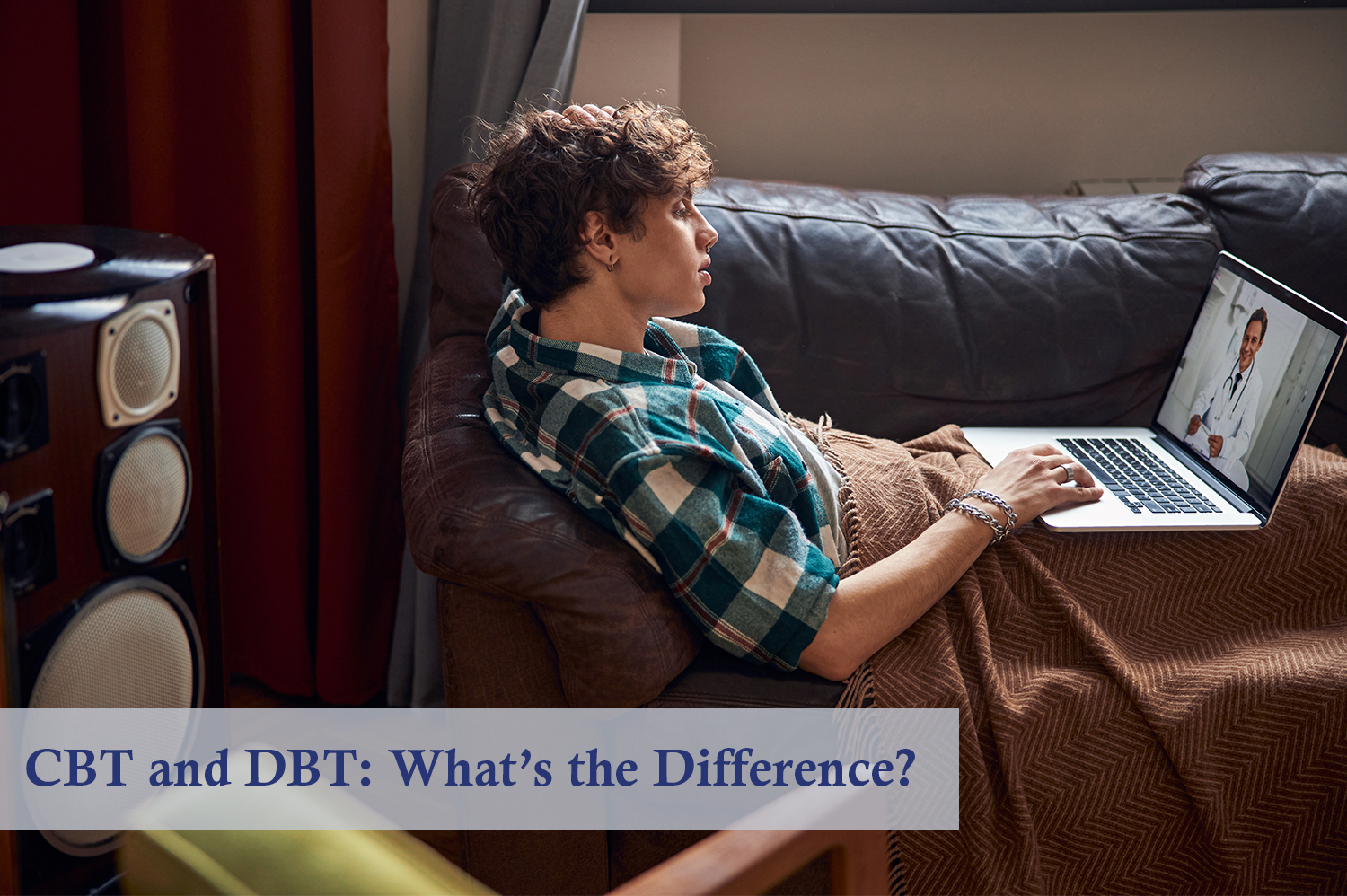Psychotherapy, otherwise known as talk therapy, is an essential part of the treatment of many mental illnesses. Cognitive behavioral therapy (CBT) and dialectical behavior therapy (DBT) are two of the most commonly used forms of talk therapy. They may sound the same (and have similar acronyms), but they are very different. To help differentiate the two, we’ll go over what CBT and DBT are, and how they differ from each other.

CBT is an evidence-based treatment that focuses on the relationship between your thoughts, feelings, and behaviors.
What is CBT?
CBT is an evidence-based treatment that focuses on the relationship between your thoughts, feelings, and behaviors. The principles behind it recognize that learned patterns of negative thoughts and unhelpful behaviors can lead to psychological challenges. But it’s possible to replace these negative behaviors with new, positive ways of thinking and behaving.
It is an approach that has been proven by research to work for many different mental health challenges. Some include anxiety disorders, depression, eating disorders, and substance use disorders. Typically, CBT is a short-term, goal-oriented treatment. A patient will work closely with a therapist to uncover thought patterns that may be causing unhealthy or self-destructive behaviors. Then, they’ll work on techniques to redirect those thoughts for present and future use.
What is DBT?
DBT is a modified form of CBT, but with a greater focus on emotional and social aspects. It was developed to treat borderline personality disorder but is also effective in helping those who struggle with suicidal thoughts and self-harm behaviors. This form of therapy involves balancing acceptance and change. Patients will work on recognizing and examining negative thoughts but also work on accepting them and finding a healthy coping mechanism in response.
DBT relies heavily on mindfulness skills and strengthening self-awareness. Oftentimes, patients will learn mindfulness, emotion regulation, distress tolerance, and interpersonal effectiveness to help them. This way, patients will be able to ground themselves in reality, deal with emotions before they lead to self-destructive behaviors, and find a healthy way to distract themselves.
Key Differences between CBT and DBT
Both CBT and DBT involve learning how thoughts can affect behaviors and feelings. However, in DBT, there’s not a heavy reliance on changing thoughts. DBT adds emphasis on accepting those uncomfortable thoughts or feelings rather than struggling with them.
As mentioned before, CBT is a short-term treatment with a specific goal in mind. DBT usually isn’t used for short-term treatment and has a broader focus with regular individual meetings with a therapist, as well as group sessions.
DBT also has a focus on strengthening the relationships shared with other people. Some techniques taught during therapy include learning to ask for help, asserting one’s needs, and distinguishing unhealthy interpersonal dynamics.

We’re always here to support those who need us.
Choosing A Treatment Method
When it comes to handling mental illness, each person faces unique challenges. Sometimes these challenges can seem impossible, but with the help of psychotherapy, things can greatly improve. The great thing about CBT and DBT is they are effective in treating a wide range of mental health disorders.
But which one is the right one to use? Determining that is best made by working with a therapist. At Equity Associates, our trained and experienced therapists help teens and tweens get the treatment they need. We’re based in Ridgway, Colorado but can help those anywhere in the state. No matter what, we’re always here to support those who need us.






